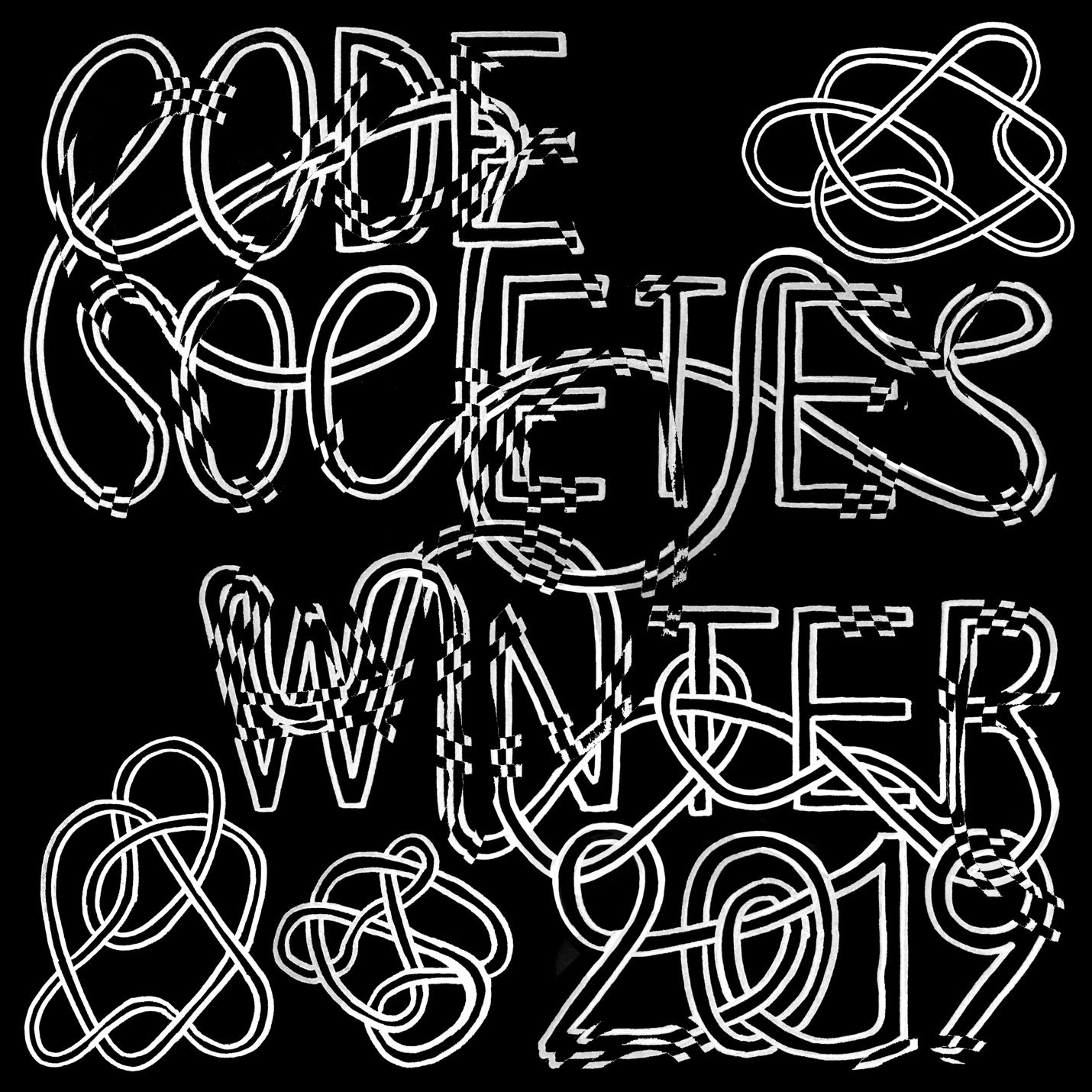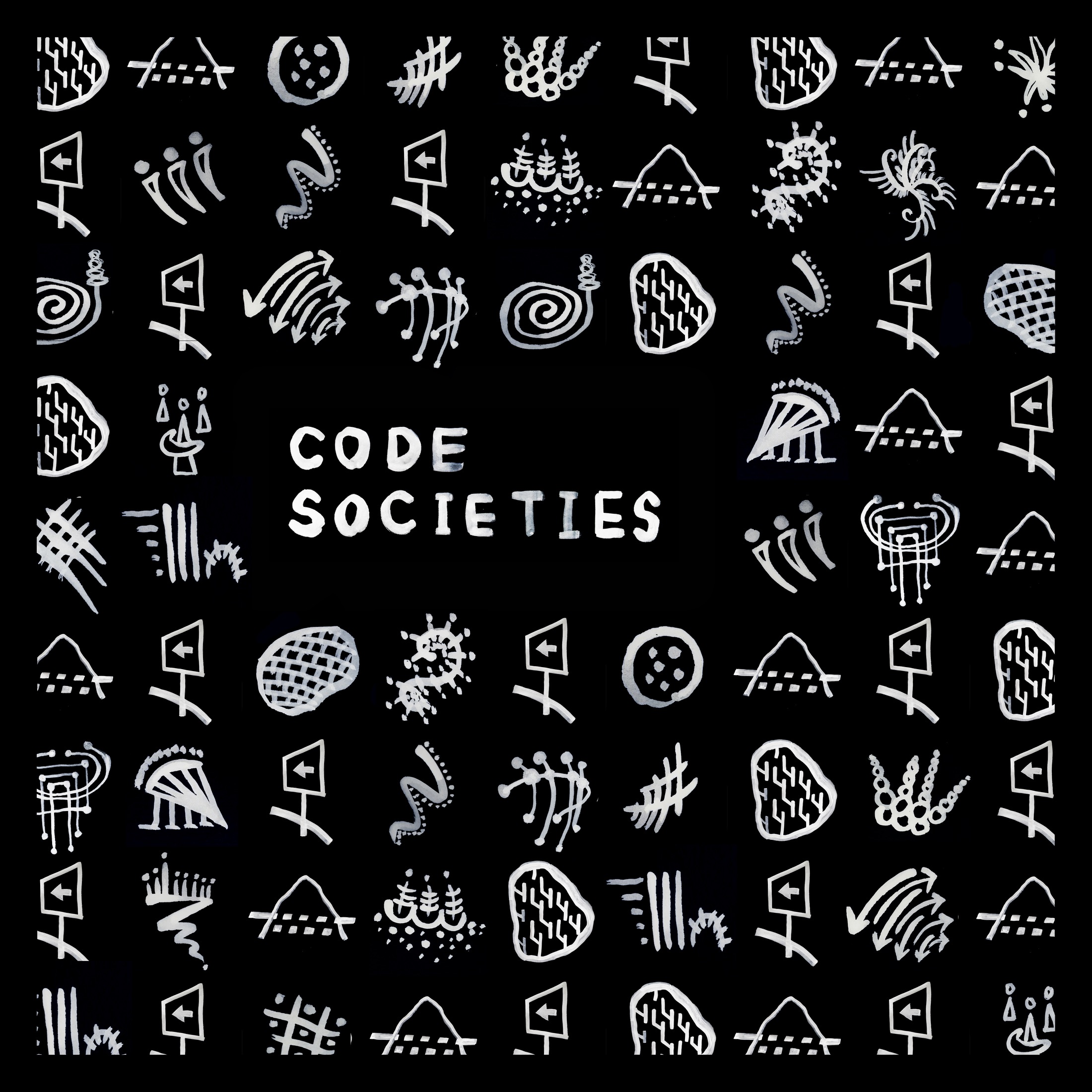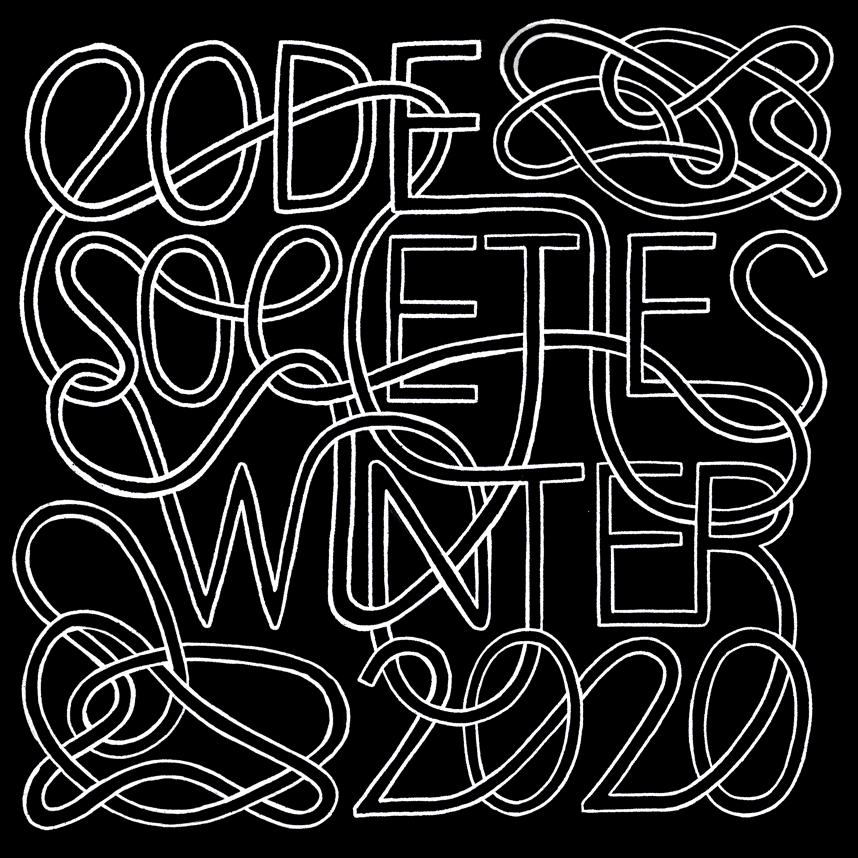Like Fruitful School, Code Societies is a code-related learning initiative happening concurrently this Winter 2020. While the specific programs of our schools are quite different, we wanted to learn more about Code Societies and how it has changed over time, now in its third iteration.
The following conversation was transcribed and edited from a phone call.
Can you tell me a little about your Code Societies’ graphic? How has it evolved over the three years?
The current graphic reads almost like an illusion. At first it looks like a tangle of knots, but then you realize you can read it… We were thinking about entanglements in society and programming loops—which are all relevant material for Code Societies.
Code Societies is the School for Poetic Computation’s three week program about how code and society are coproduced. It’s a balanced, interwoven study of critical theory and hands-on coding workshops. In the graphic, the breathing, animated purple is feminine-feeling, which in a computational setting has political implications. Purple also symbolizes magic, like in our recent class exploring computation through magical and divinatory language by our teacher Allison Parrish.
Since our graphic could attract potential students, we had a responsibility to visually represent our program accurately. We didn’t want students to apply thinking it’ll be a coding bootcamp. This is about theoretical code, and through our choice of visual language, we wanted to be upfront about that as much as possible.

The woven knot graphic was created by Lisa Larson-Walker. Lisa is a brilliant illustrator and was also one of the students in the very first Code Societies during summer 2018.
Lisa made many variations, and you can see it changed slightly from Winter 2019 to 2020. But what stayed the same was the dark background and white text. This is because of American Artist’s influence. American taught at Code Societies now each iteration (Summer 2018, Winter 2019, Winter 2020) and wrote Black Gooey Universe, which charts how computer terminals changed from default black to white background, which charts how computer terminals changed from default black to white background, and how this is an expression of white supremacy, or to quote a current Code Societies student, Char Jeré, “white inferiority.” What does it mean when a large group of people assumes that a white background is default, or an empty space ready to be imprinted on, when other colors such as black and blue are just as easily marked? We should remember that on a screen, pixels can be any color. Defaults from another medium such as the printing press, for example, shouldn’t necessarily become screen defaults.

For the very first Code Societies in summer 2018, I hand-painted small glyphs during one sleepless night. I knew I wanted lots of symbols without meaning attached to them already, which felt like a good foundation for beginning.
I noticed this first iteration was during the summer. And the second and third (going on now) have been during the winters. What’s it like to teach in these extreme seasons?
During that first summer, it was very hot. Our building in NYC’s West Village doesn’t have air-conditioning. We had a loud, not very effective AC in the room with about ten fans going. To be heard over the fan sounds, every teacher had to speak into a mic. And then when it was time for discussions, students passed around the mic to participate. It wasn’t very natural.
Then in our first winter, there was a problem with the building’s heating system. So instead of ten fans, we had ten heaters. Thankfully the heaters were quiet. But with all the wires running everywhere, sometimes we would blow a fuse. Thankfully in our second winter (right now, 2020), there is heat in the building. The room is comfortable without any alterations.
I actually think summer suits Code Societies quite well. So much of Code Societies is about unlearning patterns of what education is, what it looks like, what it feels like—building new structures, like weaving cloth, and how we want to co-learn and co-teach with each other. Summertime is traditionally the only time when students who participate in traditional US education have an explicit break from that structure. So mentally a summer feels more “chaotic good” in an educational sense.
Anything you’re especially excited about for this Winter 2020 iteration?
Code Societies is such an intensive project, and this is the first time I’ve had a whole year between iterations, which has allowed me to the time and space to grow as an organizer and teacher. I’m excited to bring that to the project.
This year in particular, we are trying out a new organizational structure...
In the first two iterations, I had TA’s (teaching assistants). It soon became clear to me that TA’s contributed so much to the program—it’s an important role. So in this iteration, there are no TA’s, but instead “co-organizers,” which feels more accurate and respectful for the type of work involved.
Right now, I’m working with Neta Bomani and Emma Rae-Norton as a team of three co-organizers. I’m excited about the affordances this new organization structure allows, as Neta is leading an oral history project and Emma is publishing Code Societies’ new website with blogs.
Code Societies is really about technology as a social idea. To propose that you “only learn a technical thing” apart from a social history of that thing is false. At Code Societies, we believe there is no computational education without a critical (anti-racist, anti-sexist, and environmentally conscious) theory of computation. The teachers, students, and organizational structure of Code Societies, this iteration especially, all reflect this.
Melanie Hoff is the lead organizer of Code Societies—a three-week intensive educational program at the School for Poetic Computation, now in its third iteration.
The Student Showcase will be on January 25, 2020, which you can find out more about here.
